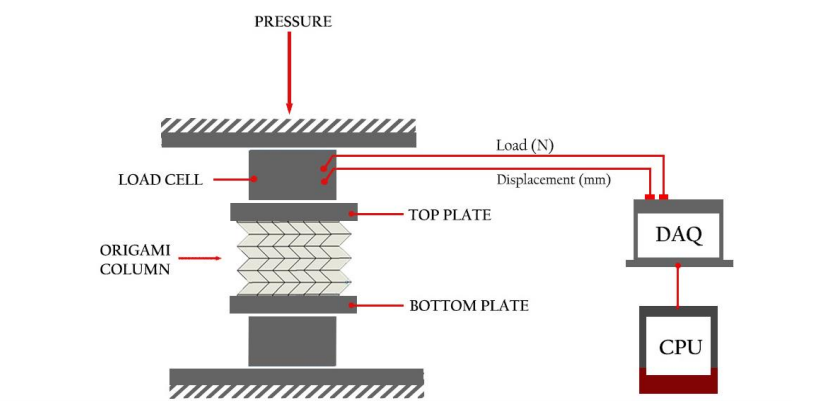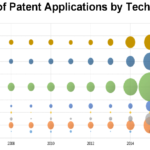

In the recently published ‘Study on the compressive behavior of Miura origami column structure,’ authors I.G.R. Permana, M. Rismalia, S.C. Hidajat, A.B. Nadiyanto, and F. Triawan explored the mechanical properties of Miura-origami patterns. Because their versatility—mainly in foldability—is a source of continued fascination, the researchers chose to study the mechanical behavior when 3D printed.
An ancient Japanese art that is both a source of fascination and reverence around the world, origami is becoming increasingly more popular in engineering applications due to its potential for design in aerospace, energy (such as solar panels), robotics, and more. Some research has also reviewed its potential for energy absorption devices like automotive crash boxes. And while there is little prior knowledge of how Miura-Ori structures function under compressive load, this study investigates the mechanical properties of column structures.
“The Miura-Ori pattern is constructed with four repeating parallelograms panels which are arranged along the alternating mountain and valley folds as shown in figure 1. The size of each parallelogram for all specimens were kept constant where b = 11 mm and c = 8.66 mm. In this study, the Miura origami column was designed with three folding angle variation (θ = 70o , 90o , 110o ) and two thickness variation (t = 1 mm and 2 mm).”

3D printing samples for the research study with PLA, the authors examined variations with both angles in folding and wall thickness of prints. After that, they looked at the energy absorption capacity also. Specimens were comprised of three layers, with compression testing performed and data recorded afterward regarding load and displacement curve.
The researchers discovered that they were able to make the structure stronger by increasing the folding angle of the pattern, realizing that while a low peak force was necessary for the best energy absorption, a high mean crushing force was also required.
“However, due to its geometric constraint, the result showed that the wider folding angle could reduce the energy absorption capacity of the structure,” concluded the researchers. “Finally, the structure with 2 mm wall thickness exhibits higher yield stress, compressive modulus, and energy absorption capacity compared to the 1 mm structure. As a future work, the development of finite element model (FEM) to understand comprehensively the behavior of Miura-Ori column structure will be done.”
You might be surprised to find out how often the Japanese inspiration of folding structures and patterns like origami and 3D printing cross paths, from fabrication of metamaterials resulting in a tunable Miura-ori tribe, to expandable structures for engineering applications to mechanisms for creating robots. What do you think of this news? Let us know your thoughts! Join the discussion of this and other 3D printing topics at 3DPrintBoard.com.
[Source / Images: ‘Study on the compressive behavior of Miura origami column structure]
If you're looking to get architectural 3D animation in the USA, our service provides an exceptional way to bring your architectural concepts to life through dynamic, immersive visuals. Through our platform, you can easily request high-quality 3D animations that showcase your designs in motion, offering a detailed view of your project from multiple angles and perspectives. Whether it's for a real estate development, a commercial building, or an urban planning project, our expert team ensures that every detail is captured in a visually compelling animation.
Through our website, you can seamlessly get architectural 3D animation tailored to your project’s specific needs. With our help, you can offer potential clients or investors an engaging experience that goes beyond static images. By integrating CGI animations with real-world settings, lighting, and textures, our team creates a lifelike experience that allows your audience to interact with your project as though it were already built. This service is perfect for presenting complex designs in a clear, visually attractive way that stands out in the competitive architectural market.




